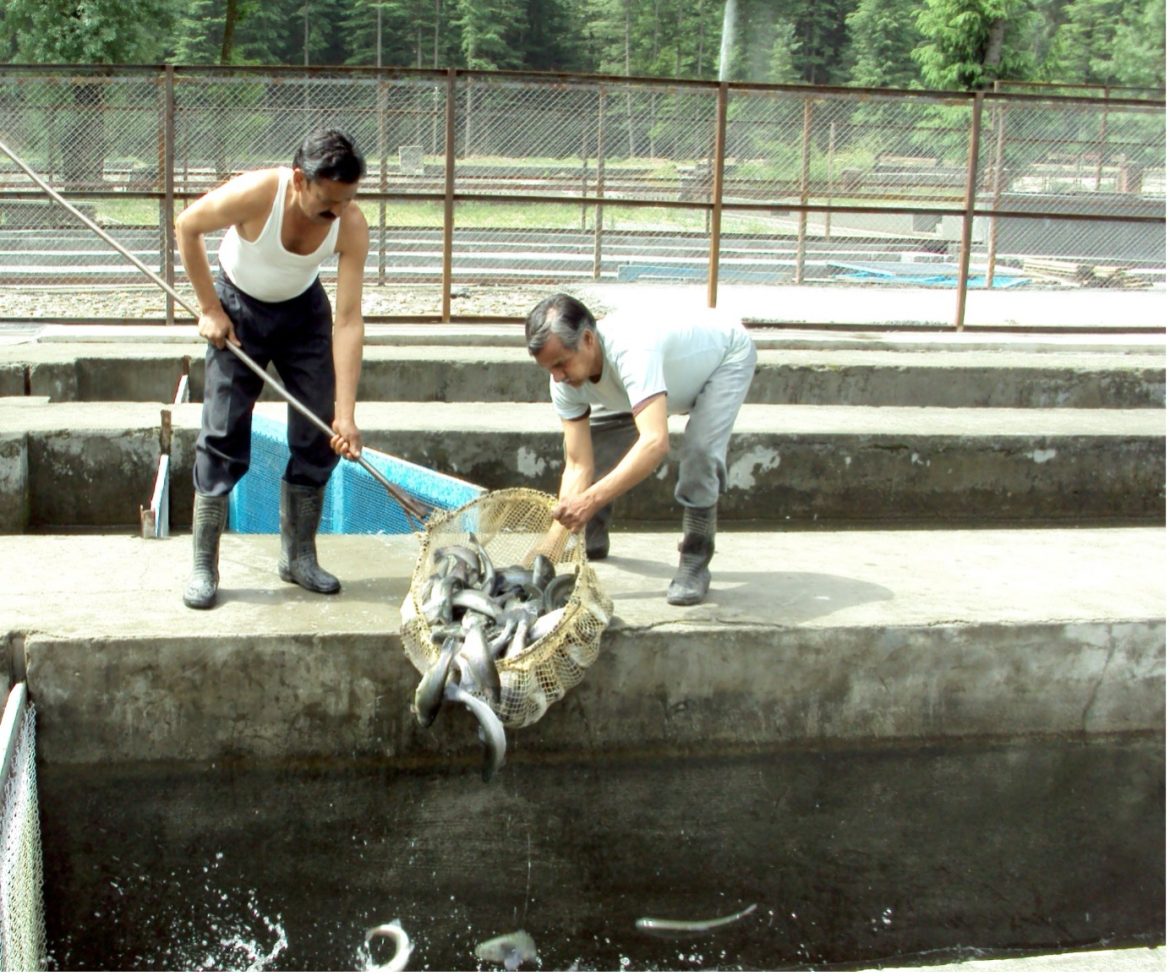Himachal Pradesh is poised for a significant transformation in trout fish farming through the adoption of cutting-edge Japanese technology at the Indo-Norway Trout Fish Farm in Patlikuhal, Kullu district. The innovative “recirculating aquaculture system” from Japan is set to revolutionize fish production, anticipating a fourfold increase while optimizing water and space utilization.
The Japanese technology features a water recycling and filtration system in fish farming tanks, allowing the efficient reuse of water for fish production. This advancement not only enhances production capacity but also ensures sustainability by conserving water resources and space. Notably, the technology enables the fish farm to operate seamlessly even in polluted waters resulting from periodic flooding of the Beas River.
The ambitious project, under planning for a year, is on track for completion by March 2024, marking a significant milestone in fisheries innovation. Khem Singh Thakur, Deputy Director of the Department of Fisheries, expressed confidence in the transformative impact of this technology, anticipating a revolution in fish production.
The trout fish farm in Patlikuhal has been a crucial supplier to renowned hotels in the country. Originating between 1988 and 1991, the collaboration between Norway and India introduced commercial trout production.
With the import of brown and rainbow trout seeds from Denmark, the farm has achieved an annual production of 15 to 20 tonnes, contributing approximately ₹2 crore annually to the state government’s revenue. Trout fish consumption is associated with various health benefits, including cancer risk reduction and cognitive function enhancement.
The Fisheries Department has demonstrated progress in trout fish cultivation in warm water conditions in the Gobind Sagar and Kol dam reservoirs in Bilaspur district. The installation of fish cages at the Kol dam reservoir in Kasol, particularly for rainbow trout, under the CSS-Blue Revolution initiative in 2020 has yielded promising results.
The rapid growth of fish, gaining nearly 1 kg in eight months compared to the typical 2 to 2.5 years required in cold-water regions, indicates the success of the experiment.
This breakthrough opens avenues for trout fish cultivation in warm districts during the favourable water temperature span of 5 to 9 months. The Kol dam currently produces around eight metric tonnes of trout fish, with an average weight of 300gm and a maximum weight of 1 kg.
The success of this initiative is expected to lead to a harvest of approximately 100 metric tonnes of trout fish in the coming years, contributing significantly to the growth of the fishery industry. With over 12,000 registered fishermen and numerous households reliant on fisheries for livelihood, this success story underscores the positive impact of innovation in the fisheries sector.
Source: Hindustan Times

